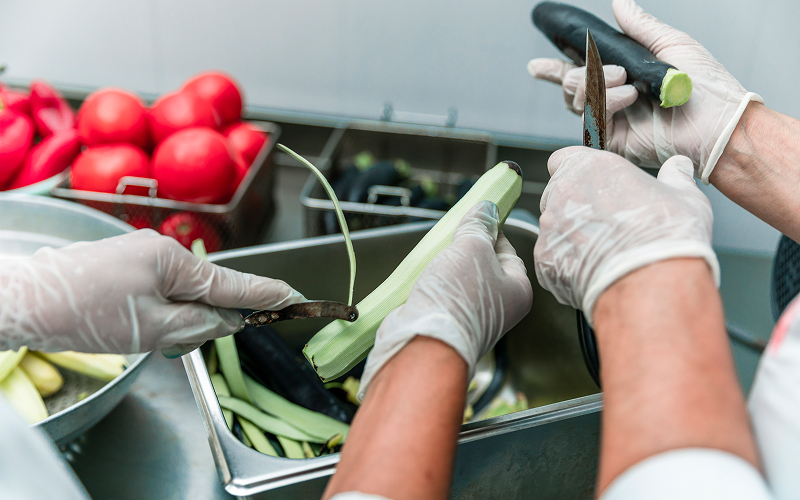Food may be Singapore’s national obsession, but safety is what keeps it trustworthy. A food hygiene course or a food safety course level 1 plays a larger role in protecting customers, building reputations, and shaping the F&B industry. Every hawker stall, café, and restaurant shares one responsibility: ensuring that what they serve is safe to eat. But how does a course that begins with handwashing drills and temperature checks evolve into lessons that inspire innovation?
Where Every Food Safety Journey Starts
The food hygiene course begins with simple yet essential lessons: personal cleanliness, safe storage, and the prevention of cross-contamination. Learners discover that something as small as leaving cooked rice at room temperature can create risks, or that chopping raw chicken and vegetables on the same board is an easy recipe for food poisoning. These basics form the backbone of hygiene in every kitchen, from hawker stalls to five-star hotels.
But the journey doesn’t stop there. The food safety course level 1 introduces advanced concepts like hazard analysis, pest management, and environmental hygiene. Participants begin to understand how small lapses, such as failing to maintain kitchen ventilation or overlooking stagnant water near sinks, can invite larger problems. At this stage, hygiene training shifts from task-based rules to systems thinking, where maintaining a clean environment means anticipating and preventing risks.
This layering of basics and advanced knowledge creates food handlers who are not just compliant but prepared. It ensures that food businesses can operate confidently under strict inspection regimes, while also reassuring customers that safety is embedded in every meal.
Turning Lessons into Habits
Passing a test is one thing, and applying the lessons daily is another. A food hygiene course is designed to encourage guided reflection, prompting participants to examine how their habits affect the bigger picture. Reflection helps bridge the gap between theory and practice. For example, it’s easy to recite the safe cooking temperatures for meat. But it takes awareness and discipline to check thermometers consistently during a busy lunch service.
Guided reflection also encourages employees to see hygiene as part of personal pride. Instead of thinking, “I must do this because inspectors expect it,” participants start to frame hygiene as, “I want to serve food that I would confidently eat myself.” This shift is important because food safety needs commitment.
In a broader sense, reflection also extends to businesses. Managers can use the principles learned in a food safety course level 1 to review systems, asking questions like: Are refresher courses scheduled? Are cleaning protocols realistic, given the workload? This kind of reflection fosters long-term improvement, turning a certificate into an evolving culture of safety.
Moving Beyond Compliance
Singapore’s food industry doesn’t stand still, and neither should hygiene practices. Innovations are already reshaping how lessons from a food hygiene course are applied. Digital tools like temperature sensors with alerts help staff maintain storage safety without manual checks. Colour-coded systems for equipment are being adapted into mobile-friendly checklists, ensuring staff always know which tools to use and when.
Sustainability is another frontier. In addition to hygiene, many kitchens are now focusing on reducing waste, recycling safely, and cutting water use without compromising cleanliness. This reflects a growing consumer interest in environmentally responsible dining, showing how the food safety course level 1 can evolve to include future-facing practices.
Inclusivity is also driving innovation. Courses offered in multiple languages and formats ensure that Singapore’s diverse workforce has equal access to training. This shift makes hygiene education more practical and relevant for different groups, from part-time staff in hawker stalls to career changers entering the F&B industry.
The innovation isn’t about replacing basics but building on them. By combining traditional lessons with modern tools and values, the industry can elevate food safety from compliance to creativity.
From Rules to Culture
A food hygiene course or food safety course level 1 may begin with simple handwashing demonstrations. But its impact provides the essential building blocks of safe food handling, guides learners in reflecting on their daily habits, and inspires innovations that align with modern expectations. The certificate earned is a statement of responsibility, trust, and professionalism. For individuals, it builds confidence and employability. For businesses, it strengthens reputations and customer loyalty. Ultimately, food safety in Singapore is about creating a culture where every plate served reflects care, responsibility, and progress. When viewed through this lens, hygiene training is a powerful tool for shaping the future of the food industry.
Starting a career in Singapore’s F&B industry? Don’t just pass the test. Use a food hygiene course from Avanta Academy to turn everyday routines into habits that build trust and success today.

